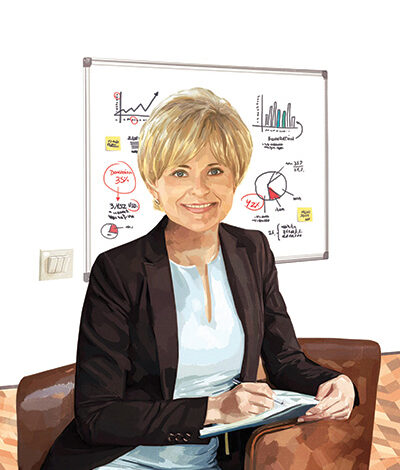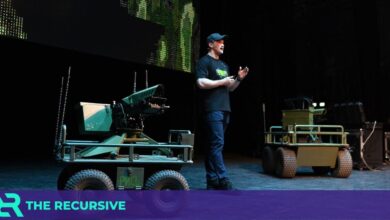Marjie French – San Antonio Magazine

Marjie French says she fell in love with the Alamo City the moment she arrived nearly 10 years ago to join the University of Texas at San Antonio staff. “I think it’s our sense of family and the generosity of spirit,” says the Beaumont native. “There’s just such a rich cultural tapestry here and the people are warm and generous and a lot of fun.” After setting fundraising records at UTSA as vice president for external relations and chief development officer, French last month assumed the role of CEO at the San Antonio Area Foundation. The position was vacated in 2017 with the retirement of Dennis Knoll. French steps in to lead a foundation that has more than $900 million in assets, nearly 530 donor-assisted funds and management of Santikos Enterprises, which accounts for about two-thirds of the foundation’s portfolio. French says she’s looking forward to making an impact on the greater community that she’s become a part of. “I’m a relationship builder and a collaborator,” she says.
You have nearly 30 years of experience in fundraising in higher education. What attracted you to the San Antonio Area Foundation (SAAF)?
I spent my entire career dedicated to working with donors and assisting them in achieving their philanthropic goals so this is a logical next step. I also love the San Antonio community. I’d followed the Santikos gift, which was super exciting for the foundation and for the community and I thought this would be a fantastic opportunity to lead an organization that has such an impact on the community.
What’s first on your agenda?
First of all I’m going to meet with every staff member and every board member and as many of the donors as I can in the first couple of months. I’ll be off on a listening tour.
What do you want people to know about the SAAF?
We’ll be spending a lot of time on our communication efforts. We really want to push out the good stories about what the foundation does and the grants that we provide to the community. That’s through the donor funds but also the Santikos capital giving. I think we need to talk about the impact of those gifts. Everybody focuses on the dollar amount of that Santikos gift, but perhaps not as much on the impact of that gift. COO Rebecca Brune and I both want to communicate impactful stories.
Brune wrote last year about further aligning the foundation’s goals with those of SA2020. Is that something you’ll focus on?
Yes, we’ve talked about that. We’ve also talked about benchmarking against other foundations—ones that we both think are doing really interesting community grants. So we’ll be taking a look at foundations like those in Seattle, Atlanta, the Carolinas, Arizona. They’re doing some very innovative community initiatives and grants. That’s one of the things I’m most excited about.
Seattle has a great fund called Geeks Give Back that addresses homelessness. The Ford Foundation has a Build Fund that really helps nonprofits with infrastructure needs. Another foundation has an entrepreneurial fund that encourages entrepreneurship in their area. Those are some of the exciting and innovative community initiatives and grants and I want to see if things like that would work in this community.
You mentioned the Santikos gift, which tripled the foundation’s assets. How will that affect your work?
I’m going to get an extensive download on that once I start and I look forward to learning more and more every day.
What other goals are you working toward in the coming years?
We want to increase the number of donor funds at the foundation. I’ve been working with philanthropists my entire career. During my career we have always exceeded our projections in terms of fundraising, which means building relationships with donors. So I look forward to building those relationships. To do that I think you have to be out in the community. You have to go get out and meet people and hear their stories and understand their passions and dreams for philanthropy.
I’ll also be reaching out to the nonprofit community. I really want to hear from the leaders of nonprofits about some of the challenges that they’re having so that when we have an opportunity we can direct funding that addresses some of the challenges that they have.
I want the foundation to be seen as a collaborator with key community initiatives—a convener of philanthropists and nonprofit leaders. I’d like for San Antonio to believe that the foundation is a thought leader in the community. I look forward to having a robust dialogue with the community.
How did you get into fundraising?
I was an academic advisor at the honors college at the University of Houston. I had a wonderful dean and I let him know that I thought I would be a really good fundraiser. He gave me my first start in fundraising. I liked the idea of building relationships. It was exciting to me to be able to add value and excellence to an institution. It’s so fun to see the impact of philanthropy and how it helps to build excellence. We saw that at the University of Houston during the $350 million “Creative Partnership Campaign,” during the “We’re Texas” $1.6 billion campaign in Austin that helped with several projects, including the Real Estate Finance Center at the UT-Austin McCombs School of Business.
At UTSA, there have been so many wonderful gifts that have made a tremendous impact. The $5 million H-E-B challenge grant to create signature endowed professorships was really a game changer. There was Mr. Alvarez’s $1 million challenge gift to provide some of the first graduate fellowships, the $2.5 million Valero Energy Foundation Graduate Fellowship Fund, the $2 million Semmes Foundation Endowed Distinguished Chair in Neurobiology and, last year, Graham Weston’s big $15 million gift for UTSA’s School of Data Science. There have been some tremendous gifts to the university.
Can people make an impact even if they aren’t able to give a big gift like those?
Absolutely, and I think that’s one of the things that I want to focus on early on. We want to reach out to millennials and talk to millennials about what types of grants we could create that would be attractive to them and that would encourage them to participate. Those don’t have to be transformational multimillion dollar gifts. We just want to attract enough individuals to make an impact on the community, whether it’s something like Seattle’s Geeks Give Back fund or something geared toward the environment or seed grants for startups.
This interview has been edited for length and clarity.





